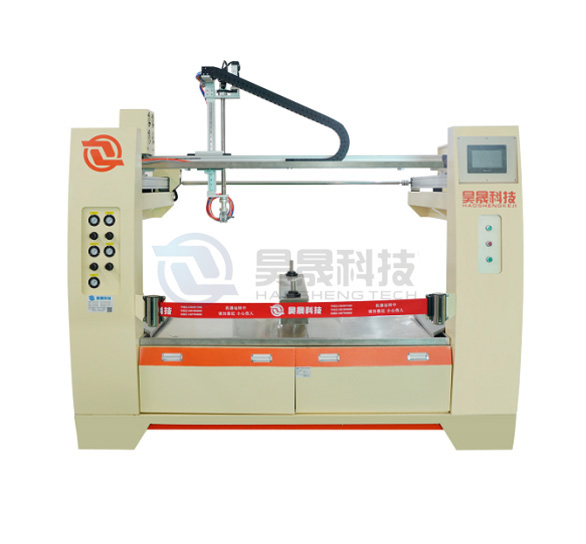The five-axis reloader plays the following important roles in automated production:
First, improve production efficiency
High-speed movement and accurate positioning: The five-axis repeater can carry out accurate movement in multiple directions at a very fast speed, greatly reducing the processing time. For example, in the manufacture of electronic products, the five-axis repeater can quickly complete the dispensing of circuit boards, mounting, etc., and its high-precision positioning ability ensures that each component can be accurately installed in the specified position, thereby improving production efficiency. Multi-task parallel processing: With its multi-axis motion characteristics, the five-axis repeater can perform multiple tasks at the same time. For example, in the processing of auto parts, it can complete drilling, milling, grinding and other processing on one station, reducing the transfer and waiting time of the workpiece, and realizing the production process. Continuous and uninterrupted operation: Compared with manual, the five-axis repeater can achieve continuous and uninterrupted production, and is not affected by fatigue, rest and other factors. This is particularly important for large-scale production and long-run production lines, which can greatly improve the utilization rate and production efficiency of equipment.

Second, product quality
High-precision machining: The high-precision motion control of the five-axis repeater ensures the machining accuracy and consistency of the product. Whether it is a complex three-dimensional shape or a tiny size requirement, it can accurately complete the processing task, reducing human error and scrap rate. For example, in the aerospace sector, the five-axis repeater can process high-precision aircraft parts, ensuring the reliability of the aircraft. Stable machining process: the motion trajectory and machining parameters of the five-axis retractor can be accurately controlled through programming to ensure the stability of the machining process. This allows each product to be processed under the same conditions, avoiding quality fluctuations caused by human factors. For example, in precision machinery manufacturing, the five-axis reloader can ensure that the dimensional tolerance of each part is within a very small range, improving the quality stability of the product. Good repeatability: The five-axis repeater can repeat the same processing task according to the preset procedure, ensuring the consistency and repeatability of the product. This is important for mass production and quality control to ensure that every product meets the same quality standards.
Third, reduce production costs
Reduced labor costs: Automated five-axis regenerators can replace manual repetitive, high-intensity work, thereby reducing the need for manual labor. This not only reduces the human cost of enterprises, but also relieves the pressure on enterprises in recruitment and employment. For example, in some labor-intensive industries, the use of five-axis repeater can greatly reduce labor, improve production efficiency and reduce costs. Improved material utilization: The accurate processing capacity of the five-axis repeater reduces material waste. For example, in wood processing, it can accurately cut wood according to design requirements, maximize the use of raw materials, and reduce the generation of scraps. In addition, the five-axis repeater can also be optimized for processing path planning, further improving material utilization and reducing production costs. Reduce equipment maintenance costs: five-axis regenerators usually have high reliability and stability, and their maintenance costs are relatively low. Compared with traditional mechanical equipment, its structure is more simple, fewer moving parts, reducing the probability of failure. At the same time, advanced control systems and sensors can monitor the operating status of equipment in real time, identifying potential failures in advance, reducing maintenance costs and downtime.
Fourth, enhance production flexibility
Fast switching of production tasks: The five-axis repeater can be programmed to quickly switch different processing tasks and adapt to the production needs of different products. This enables enterprises to respond quickly to market changes and improve the flexibility and adaptability of production. For example, in the manufacturing of electronic products, the five-axis copying machine can quickly adjust the processing procedure according to the requirements of different models of mobile phones, tablet computers and other products to achieve multi-variety and small-batch production. Easy integration into automated production lines: The five-axis repeater can be integrated with other automation equipment such as robots, conveyor lines, etc., to form a complete automated production line. This not only improves production efficiency, but also enhances the flexibility and scalability of the production line. For example, in automotive manufacturing, the five-axis repeater can work with robotic welding, automated assembly and other equipment to achieve efficient automotive production processes. Adapt to complex workpiece processing: The multi-axis motion ability of the five-axis repeater enables it to adapt to various complex shapes of workpiece processing. Whether it is curved surface, inclined surface or special-shaped structure, it can easily complete the processing task. This provides enterprises with more design freedom to meet the individual needs of different customers.